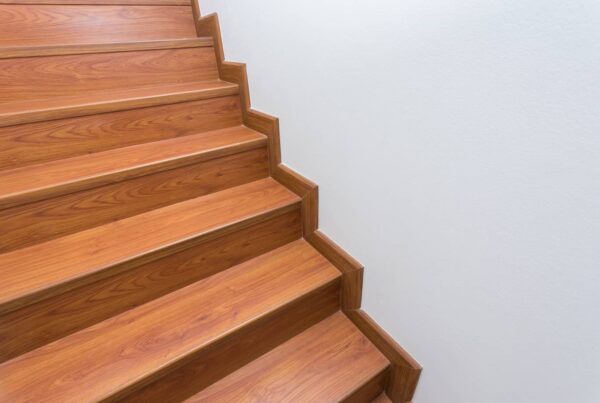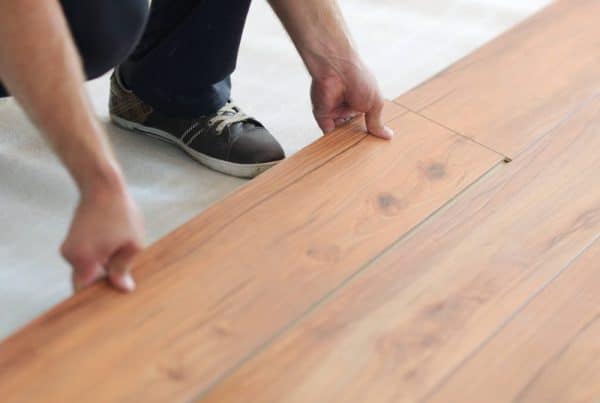
Engineered wood floors are a popular flooring choice thanks to their durability, aesthetics, and longevity. With proper care and regular cleaning, your engineered wood floors can look great for decades! In this guide, we’ll break down the basics of how to clean engineered wood floors to keep them looking their best.
Supplies You’ll Need
Start by setting yourself up for success with all of the proper supplies on hand. While you may have some basics on hand to clean, engineered wood floors benefit from specific products. Arm yourself with these cleaning essentials:
- Microfiber mops and pads lift dirt without leaving annoying lint behind. They also absorb liquid well and won’t scratch floors like string mops can.
- A good dust mop quickly whisks away surface dust between deeper cleanings. Choose one with a swivel head so it glides smoothly under furniture.
- An all-natural broom with soft bristles makes speedy work of dirt piles in high-traffic areas. Look for one with a wooden handle and natural bristles.
- pH-neutral hardwood floor cleaner is formulated specifically not to damage protective floor finishes. Stay away from vinegar, soap, or other mixes that can dull your floors.
- Optional floor wax adds another layer of protection and sheen. Use a reputable brand formulated for engineered wood.

Optimal Cleaning For Your Engineered Wood Floors
Keeping your engineered wood floors looking impeccable doesn’t require back-breaking work. Follow this easy routine to maintain their flawless finish:
Quick Daily Dusting
- Dust mop or sweep floors daily to remove surface dust and debris that can scratch floors over time. This fast daily dusting takes just minutes but prevents damage.
- Vacuum or shake out area rugs weekly since debris ground in also scuffs floors when walked on.
Weekly Mopping
- Mix pH-neutral floor cleaner with warm water according to directions. Use a spray bottle to lightly dampen a microfiber mop head or apply the solution directly to floor sections.
- Wipe floors using a figure-8 motion to lift dirt from the grain. Work in sections, re-wetting the mop frequently as it collects residue.
- Follow each section by buffing dry with a clean cloth to avoid moisture damage.
Monthly Deep Cleaning
- Sweep and vacuum floors thoroughly.
- Fill a bucket with floor cleaner and warm water. Dip a microfiber mop head and wring out thoroughly until just damp.
- Scrub floors section by section using a figure-8 motion. Rinse the mop head frequently as it picks up stuck-on grime.
- Wipe each section completely dry with a clean cloth. Allow floors to fully dry before walking on them.
Spot Treating Spills and Stains
- Immediately blot wet spills with a clean cloth. Don’t scrub, which can spread stains.
- For dried stains, spray the area with floor cleaner. Let sit 5 minutes then wipe gently with a damp cloth.
- For tough spots, use a wood stain marker matched to your floors. Buff in the direction of the grain.
Finally, use care when cleaning by avoiding excessive moisture, abrasives, and harsh chemicals that can damage the wood over time.

Other Recommended Maintenance
Keeping some simple protective habits and maintenance can further preserve your floors’ beauty over the long run. First, be sure to place mats inside and outside of entryways. These catch a lot of dirt, grit, and moisture that can otherwise get tracked in and damage floors. It’s also wise to remember to wipe or take off shoes before walking on the floors whenever possible. This prevents abrasive particles from scratching the wood.
Another easy protective step is to apply felt pads to the bottom of all furniture legs. The soft pads prevent scratches and dents from occurring when moving furniture around. Be sure to check the pads regularly and replace them as needed so they continue protecting your floors.
When you need to rearrange furniture or bring other large items in, lift and carry heavy pieces rather than dragging them across the floor’s surface. Lifting prevents potential scuffs and damage that dragging items can cause.
It’s also important to monitor indoor humidity levels. Try to keep the environment comfortably between 30-50% relative humidity. This minimizes expansion and contractions in the flooring that can lead to cracks over time. Consider using a humidifier or dehumidifier if your home tends to be particularly humid or dry.
Finally, every 1-2 years you may want to recondition your floors to restore luster and add protection. After a thorough deep cleaning, apply a fresh layer of urethane floor wax formulated for engineered wood. Buff the wax to a shine once fully dry. Be sure to check manufacturer guidelines before waxing pre-finished engineered wood.
When to Call a Professional
While minor scratches and dents can usually be fixed on your own, extensive pet damage or deep gouges require sanding and refinishing. If water seeps beneath floorboards it can cause structural damage, warping, and mold – professionals have the tools to dry, repair, and restore properly. Significant color changes, warped planks, and cracking/buckling also indicate a need for expert repairs.
If your floors have generally become worn, cloudy, and lackluster over many years of use, professional sanding and refinishing are needed to rejuvenate their appearance. This involves sanding down the top layer and applying new protective sealant for a like-new look.
For convenient whole-home deep cleaning, professionals have industrial equipment to efficiently scrub every inch while protecting the wood. They also offer experienced stain removal for stubborn spots you can’t eliminate on your own after multiple attempts.
Conclusion
In summary, with a little consistent care, your engineered wood floors can stay fresh and clean for decades. Dusting daily, mopping weekly, deep cleaning monthly, and treating spills promptly, are key ways to maintain their like-new beauty.
Implement some simple preventive measures as well, like using furniture pads and entry mats. And know when to call in a professional for major repairs or renewing worn floors. If you’re unsure whether your floors can be cleaned up or need a bit more work, schedule a home inspection with Atkinson Inspection Services in Clermont, FL, and surrounding areas today!



